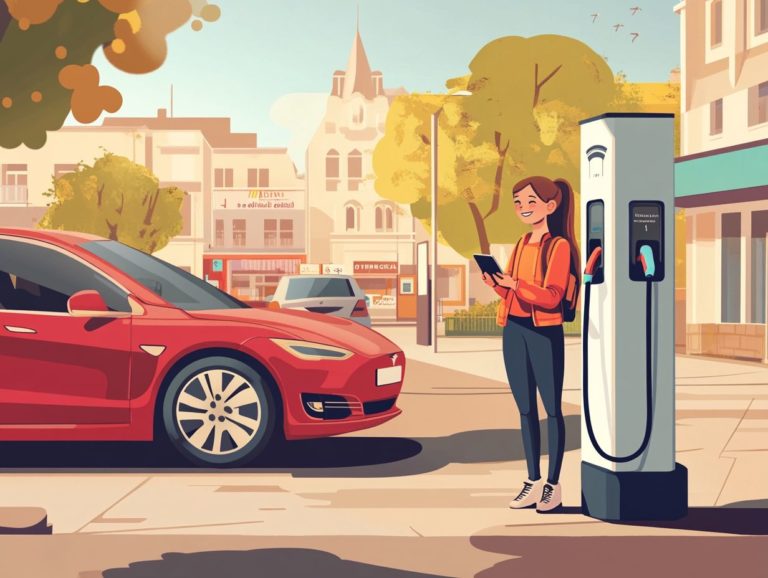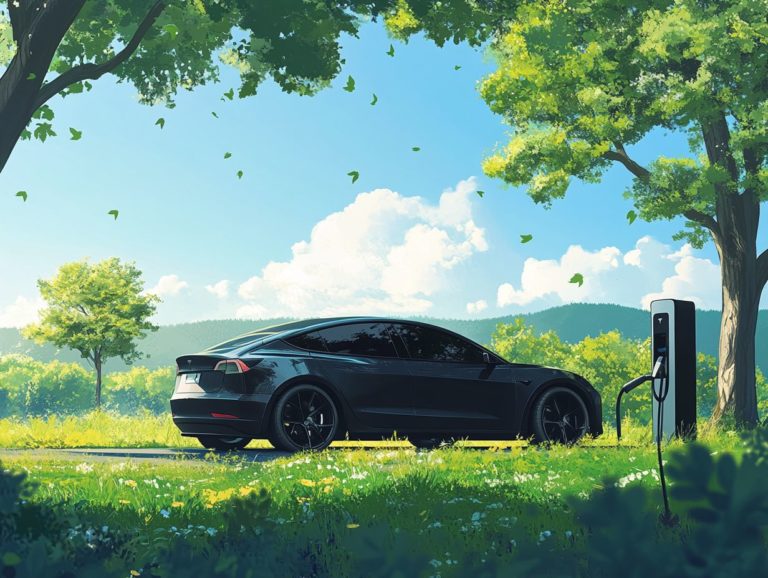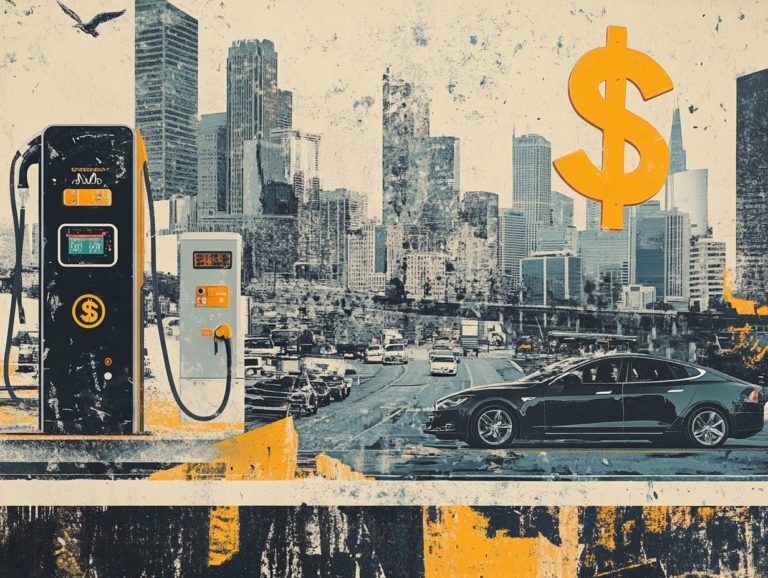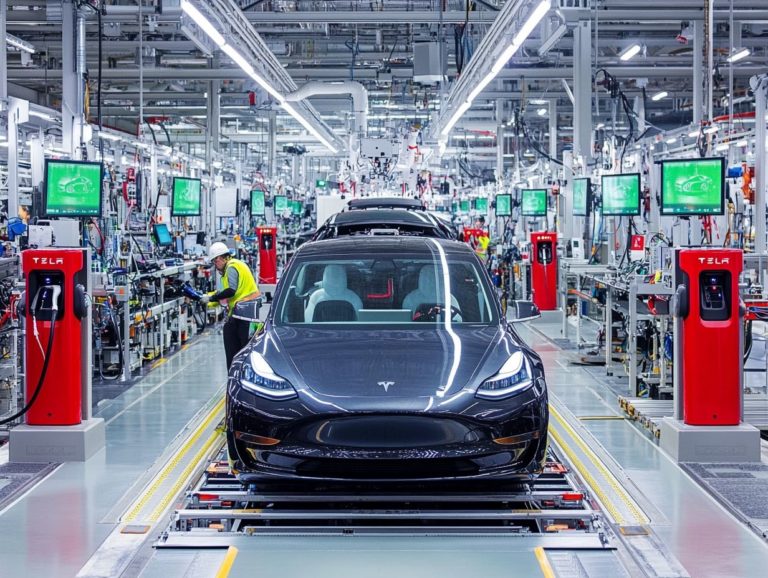5 myths about electric vehicles debunked
Electric vehicles (EVs) are frequently shrouded in misconceptions that can muddle your decision-making as a potential buyer.
Worries about costs and range, safety concerns, and the state of charging infrastructure fuel myths that might discourage you from embracing this environmentally friendly option.
This article aims to debunk five prevalent myths surrounding electric vehicles, offering you clear insights into their actual costs, capabilities, safety features, and the current landscape of charging stations.
Explore the facts with us, and empower yourself to make an informed choice about transitioning to electric.
Contents
- Key Takeaways:
- 1. Think EVs Are Costly? Think Again!
- 2. Electric Vehicles Have Limited Range
- 3. It Takes Too Long to Charge an Electric Vehicle
- 4. Electric Vehicles Are Not as Safe as Gasoline Vehicles
- 5. There Are Not Enough Charging Stations Available
- How Do Electric Vehicles Compare to Gasoline Vehicles in Terms of Cost?
- Frequently Asked Questions
- What are the 5 myths about electric vehicles that are commonly believed?
- Myth #1: Electric vehicles have a short driving range.
- Myth #2: Electric vehicles are more expensive than traditional cars.
- Myth #3: Electric vehicles take a long time to charge.
- Myth #4: Electric vehicles are not as powerful as gas-powered cars.
- Myth #5: Electric vehicles are not environmentally friendly.
Key Takeaways:
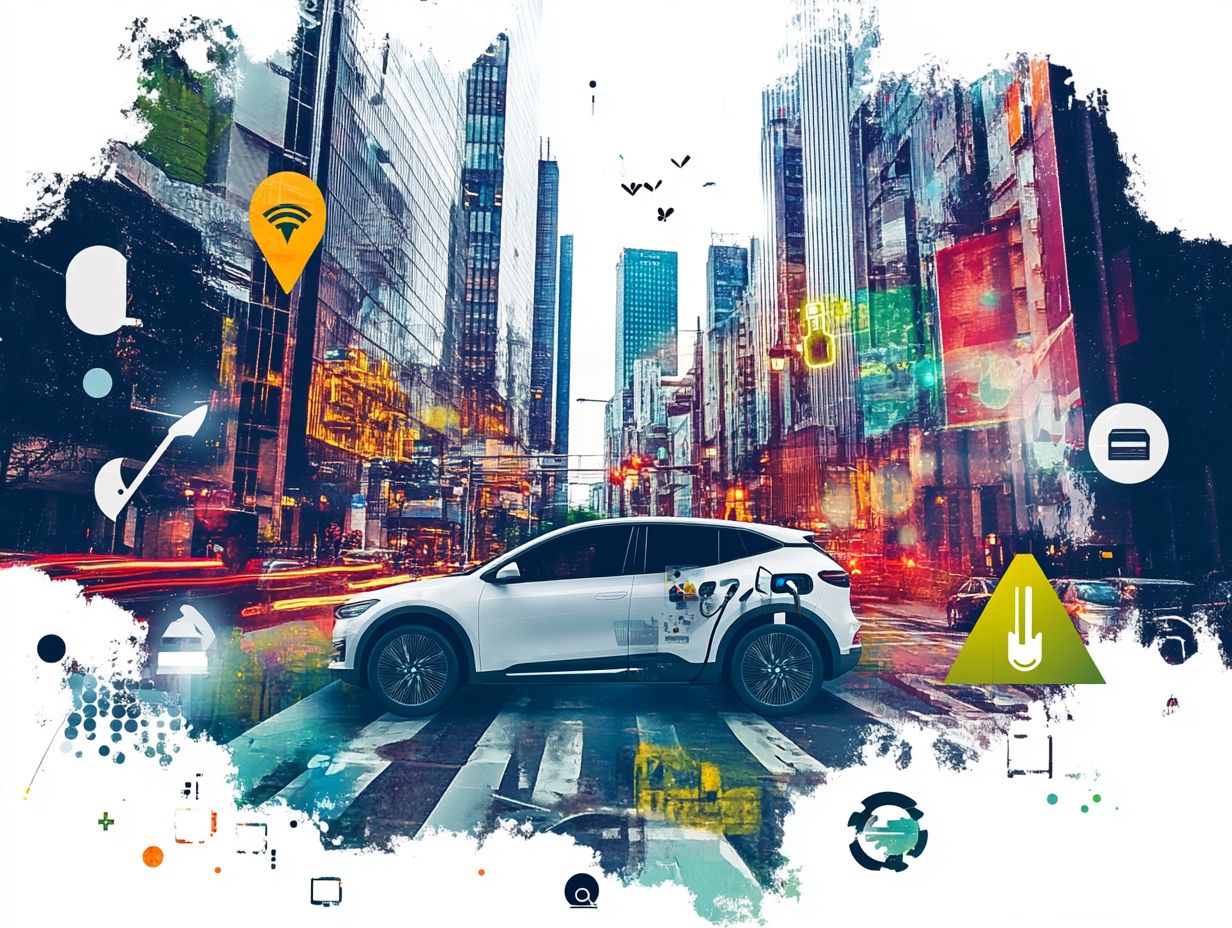
Electric vehicles can actually save you money in the long run due to lower maintenance and fuel costs compared to gasoline vehicles. Most electric vehicles now have a range of over 200 miles, making them suitable for daily use and longer trips. With advancements in technology, electric vehicles can now be charged up to 80% in as little as 30 minutes.
1. Think EVs Are Costly? Think Again!
Electric vehicles (EVs) might initially seem like a pricier choice compared to traditional gasoline cars, mainly because of their initial costs. This viewpoint misses the substantial long-term savings that come with lower maintenance costs, federal incentives, and enhanced energy efficiency associated with driving an electric vehicle.
While the initial payment for a long-range EV may be higher than that of its gasoline counterpart, you’ll likely discover significant savings over time. Factors such as reduced service needs, the elimination of oil changes, and infrequent brake replacements all contribute to lower maintenance costs.
Plus, various tax incentives can help ease the financial burden, allowing you to offset those initial expenses.
As battery technology advances, not only do options for longer-range EVs become more affordable, but the overall total cost of ownership also becomes increasingly favorable. Therefore, if you’re contemplating an electric vehicle, you might find that the long-term financial benefits far outstrip the initial investment.
2. Electric Vehicles Have Limited Range
One of the most persistent myths surrounding electric cars is that they have a limited range. However, thanks to remarkable advancements in battery technology, you’ll find long-range models capable of covering significant distances on a single charge, effectively easing any worries about range anxiety (the fear of running out of power before reaching your destination). Additionally, it’s important to clarify myths about electric vehicle tax credits that can further influence perceptions of electric vehicles.
In fact, many of today s electric vehicles are crafted with the contemporary driver in mind, boasting ranges that often exceed 300 miles. This makes them not only suitable for your daily commute but also for those longer journeys you might have planned.
Take models like the Tesla Model 3 Long Range and the Ford Mustang Mach-E, for example. They deliver impressive capabilities, frequently surpassing what most traditional gasoline cars can offer. Current data reveals that the average EV can provide around 250 miles on a single charge.
Moreover, the charging infrastructure is undergoing rapid evolution, with fast-charging stations becoming increasingly accessible. You can now recharge your vehicle in as little as 15 to 30 minutes, which supports greater travel distances.
This expanding network gives you the power to fully embrace the idea of road trips, all without the nagging concern of running low on battery.
3. It Takes Too Long to Charge an Electric Vehicle
While some critics may claim that charging an electric vehicle (EV) takes too long compared to refueling gasoline cars, the truth is that advancements in charging infrastructure and the increasing number of public charging stations are transforming the experience.
Charging an EV is becoming easier and faster, significantly reducing any downtime. In fact, consider the convenience of home charging setups, which allow you to replenish your vehicle overnight.
Public stations also come with a variety of charging speeds to suit your needs:
- Level 2 chargers can typically recharge an EV in just a few hours, making them ideal for public locations.
- On the other hand, fast charging stations can provide an 80% charge in as little as 30 minutes.
This technology not only enhances your convenience but also alleviates concerns about charging costs. Many public stations are now reasonably priced or even free, encouraging a broader adoption of electric vehicles.
The growing presence of these stations in urban areas signals a significant shift toward a more sustainable transportation infrastructure.
Ready to explore electric vehicles? Let s dive into the facts!
Discover the future of driving shift to electric and join the eco-friendly revolution!
4. Electric Vehicles Are Not as Safe as Gasoline Vehicles
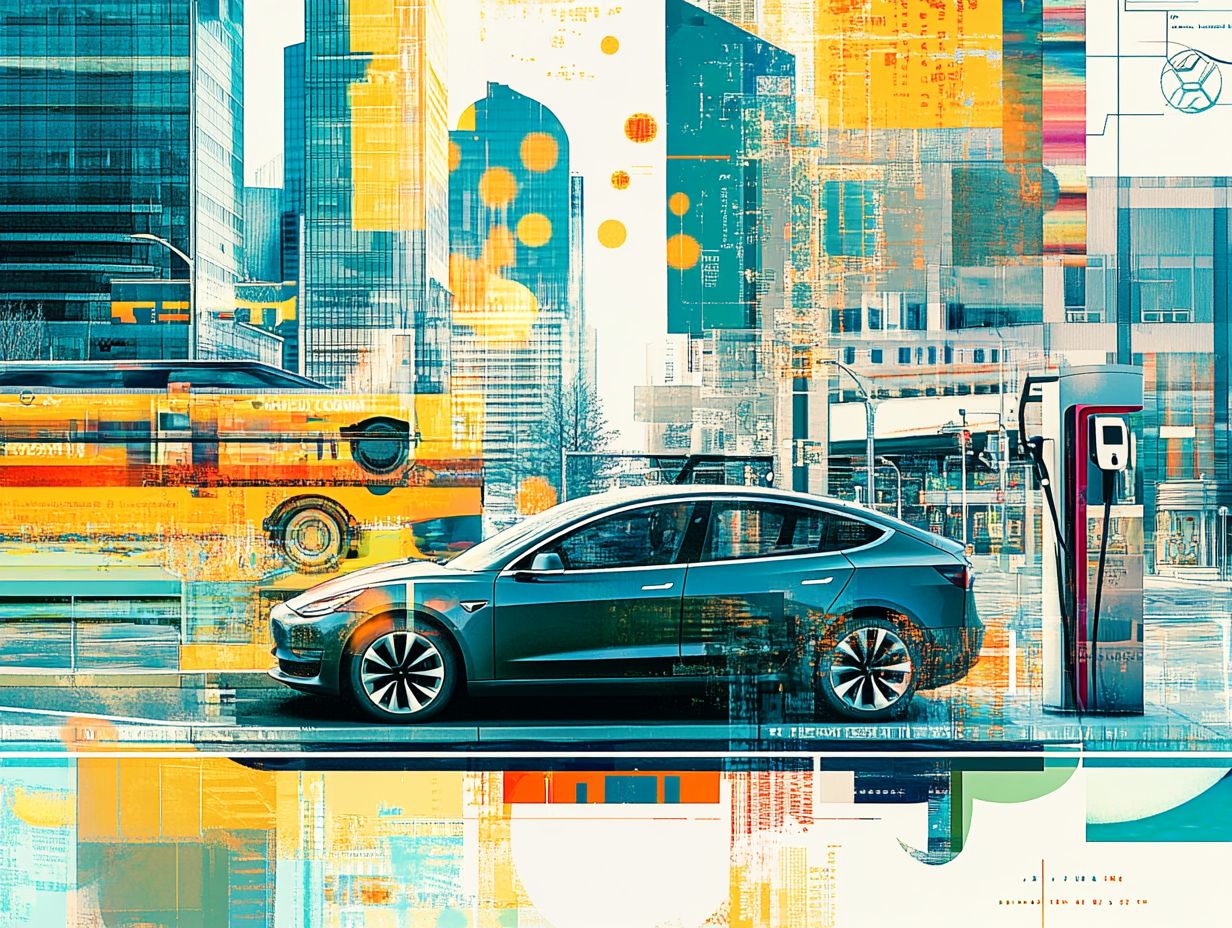
The idea that electric vehicles (EVs) are less safe than gasoline vehicles is a myth that can be easily debunked! Extensive safety features and thorough tests by organizations like the National Highway Traffic Safety Administration and the Insurance Institute for Highway Safety show that many electric vehicles excel in crash tests.
EVs come with cutting-edge safety technologies such as adaptive cruise control, lane-keeping assistance, and automatic emergency braking. These features enhance the safety of drivers and passengers while also offering vital protection for pedestrians.
Research indicates that electric vehicles have a lower likelihood of rollover accidents, largely due to their lower center of gravity.
While concerns about battery technology and fire risks are valid, most manufacturers have employed innovative designs and materials to effectively address these issues. Safety ratings reveal that electric cars are increasingly competing with their gasoline counterparts, reflecting a steadfast commitment to safety at every turn.
5. There Are Not Enough Charging Stations Available
The perception that charging stations for electric vehicles (EVs) are scarce is swiftly evolving, driven by enthusiastic support for recent U.S. policy initiatives aimed at enhancing charging infrastructure. This surge has resulted in a notable increase in public charging stations across various states, including California, South Carolina, and Virginia.
As of 2023, the U.S. has experienced a remarkable 60% rise in public charging stations compared to just a few years ago, underscoring this transformation. Challenges still exist, especially in rural areas where accessibility remains limited. Government investments, notably from the recent bipartisan infrastructure law, aim to address these disparities and ensure every driver has adequate access to charging options.
Looking ahead, projections indicate an additional 500,000 public chargers will be installed over the next decade. The future of EV infrastructure appears bright, but maintaining equitable distribution remains a critical priority.
How Do Electric Vehicles Compare to Gasoline Vehicles in Terms of Cost?
When comparing electric vehicles (EVs) to gasoline cars in terms of cost, it’s crucial to look beyond just the upfront price. You should also consider long-term benefits like lower maintenance costs, potential federal incentives, and reduced charging expenses that can significantly impact your overall spending over time.
To truly grasp the financial landscape, examine the initial purchase price, which can vary widely between models. While EVs often come with a higher sticker price, many buyers can take advantage of federal and state incentives, effectively lowering the cost.
Ongoing running costs are another critical consideration. Electricity typically costs less than gasoline, and with electric motors requiring less frequent maintenance, you could see substantial savings.
Over the years, these factors work together to create a more favorable financial picture for electric vehicles. Thus, it s important to evaluate the entire financial scenario rather than just focusing on the initial investment.
What Is the Range of Most Electric Vehicles?
The range of electric vehicles (EVs) has seen remarkable improvements in recent years. Many long-range models now boast over 300 miles on a single charge. This leap forward is largely due to advancements in battery technology that enhance energy efficiency and storage capacity.
These enhancements allow you to explore a wider variety of options without the nagging worry of running out of battery power during your daily commute or weekend road trip. Many manufacturers are integrating cutting-edge technologies, such as regenerative braking (a system that helps recharge the battery while driving) and thermal management systems, which significantly optimize range.
As electric models continue to evolve, they stand in stark contrast to traditional gasoline vehicles that often require more frequent refueling stops. This evolution alleviates range anxiety and positions EVs as practical alternatives, beautifully blending performance with efficiency while paving the way for a more sustainable future.
How Long Does It Take to Charge an Electric Vehicle?

Charging an electric vehicle (EV) can take anywhere from just 30 minutes at a fast charging station to several hours with a standard home charger. This variation highlights the need for accessible charging infrastructure and the presence of public charging stations to enhance your experience as an EV user.
When considering your charging options, keep in mind that fast chargers often located at public stations can significantly minimize downtime. They are perfect for long road trips or quick pit stops. Conversely, home chargers offer the convenience of charging overnight. This allows you to start each day with a fully stocked battery and eliminates the hassle of frequent stops.
The speed at which your vehicle charges can vary greatly depending on the model and battery capacity. Therefore, it’s vital to understand your specific needs and habits for effective planning.
As you navigate your EV journey, remember to consider your daily driving patterns, the availability of charging locations, and electricity costs when determining the best strategy for keeping your vehicle powered.
What Are the Safety Features of Electric Vehicles?
Electric vehicles (EVs) come equipped with many great safety features, as evidenced by the rigorous testing conducted by the National Highway Traffic Safety Administration and the Insurance Institute for Highway Safety. This ensures that when you choose an EV, you re opting for a sustainable driving experience that prioritizes occupant safety.
These meticulously designed safety technologies often include:
- Collision avoidance systems that dramatically lower the risk of accidents,
- Dynamic stability control that enhances handling in tricky driving conditions,
- Outstanding crash test ratings that showcase their durability during impacts.
When you compare EVs to traditional gasoline cars, which may not boast these modern enhancements, it becomes clear that EVs are not merely eco-friendly options. They also deliver a superior standard of safety, reflecting the evolving priorities in the automotive world.
What Is the Current State of Charging Infrastructure?
The charging infrastructure for electric vehicles (EVs) is currently evolving rapidly. Supportive U.S. policy initiatives are designed to boost the number of public charging stations and enhance accessibility for EV users across the nation.
Recent studies reveal that the U.S. now boasts over 100,000 public charging stations, thoughtfully placed in urban areas and along major highways. This makes it more convenient than ever for you to find a charging point.
Federal and state incentives support this expansion and drive both private and public investments in EV infrastructure. Projections indicate that this number could double in the next five years, making the path for continued development clear.
However, gaps persist in rural areas and underserved communities, underscoring the urgent need for targeted investments. By addressing these disparities, we can ensure equitable access for all EV users and foster a more sustainable future.
What Are the Potential Future Developments for Electric Vehicles?
As the demand for electric vehicles (EVs) continues to rise, you can look forward to exciting advancements in battery technology and renewable energy integration. These innovations promise to enhance performance, reduce costs, and promote sustainable transportation, particularly with strong support from U.S. policy initiatives.
These advancements are not just about improving charging speeds and extending driving ranges; they also aim to minimize the environmental footprint of production processes. For example, solid-state batteries, which use solid electrolytes, are set to deliver greater energy density and safety. This makes them incredibly appealing to you as a consumer.
With governments contemplating stricter emissions regulations, the urgency for cleaner alternatives is heightened, paving the way for increased EV adoption. Supportive policies, such as tax incentives and infrastructure investments, could play a crucial role in overcoming current adoption barriers.
Embrace the future; it s electrifying!
Frequently Asked Questions
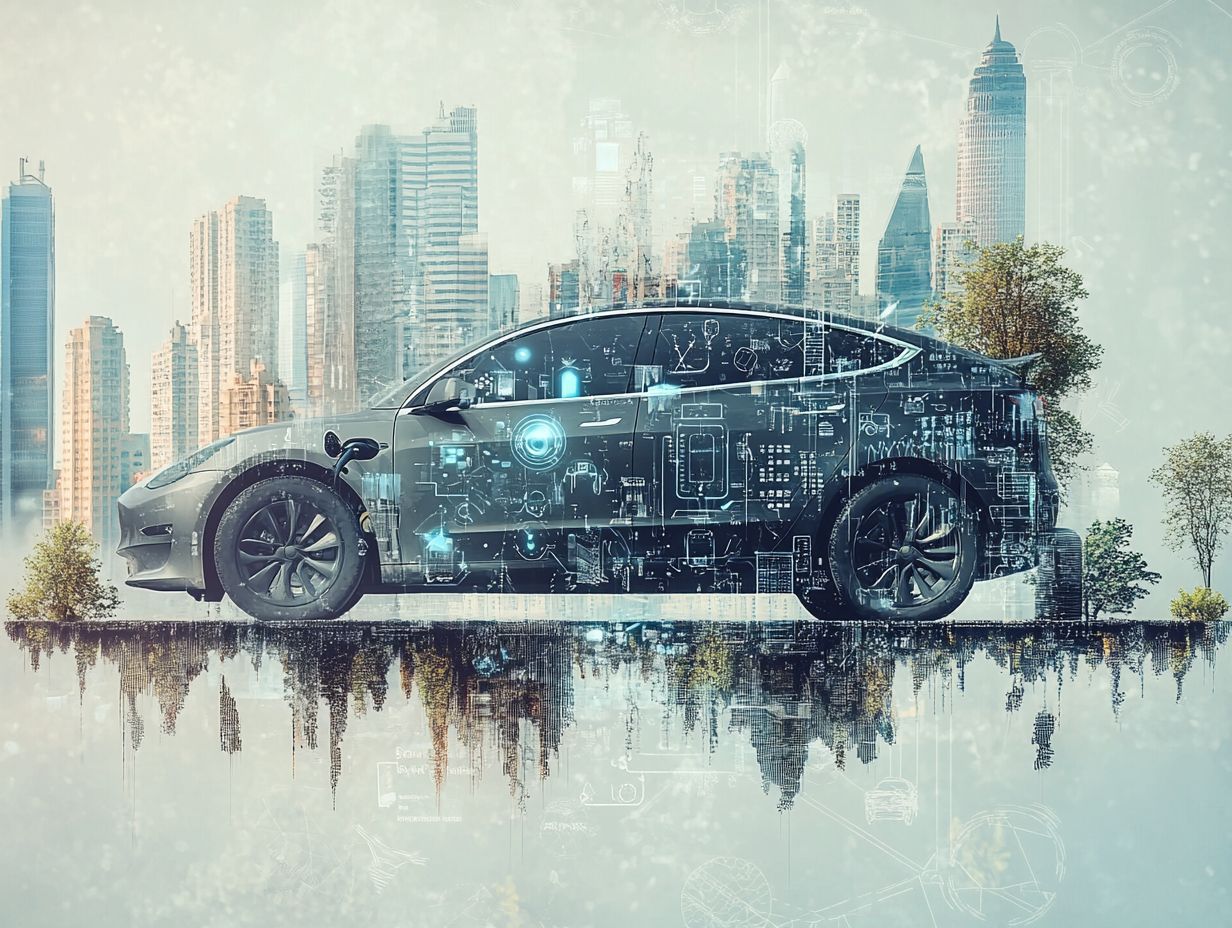
What are the 5 myths about electric vehicles that are commonly believed?
The 5 myths about electric vehicles are:
- Electric vehicles have a short driving range.
- They are more expensive than traditional cars.
- They take a long time to charge.
- They are not as powerful as gas-powered cars.
- They are not environmentally friendly.
Myth #1: Electric vehicles have a short driving range.
Electric vehicles used to have a shorter range. However, advancements in battery technology have increased their range significantly. Many electric vehicles now offer over 200 miles on a single charge, making them suitable for long-distance travel.
Myth #2: Electric vehicles are more expensive than traditional cars.
Although the upfront cost of electric vehicles may be higher than traditional cars, they can save you a significant amount of money over time! Lower operating and maintenance costs, along with government incentives and tax credits, make electric vehicles more affordable.
Myth #3: Electric vehicles take a long time to charge.
Charging times vary by model and charger type, but most electric vehicles can be charged overnight at home! Rapid charging stations are also becoming more prevalent, allowing for faster charging when you re on the road.
Myth #4: Electric vehicles are not as powerful as gas-powered cars.
This is a common misconception. In fact, electric vehicles have immediate power, which means they can accelerate faster than gas-powered cars. They also boast a lower center of gravity, making them more agile and responsive on the road.
Myth #5: Electric vehicles are not environmentally friendly.
Can you believe electric vehicles produce zero emissions? Even when considering the emissions from electricity production, electric vehicles still have a significantly smaller carbon footprint than traditional cars.

